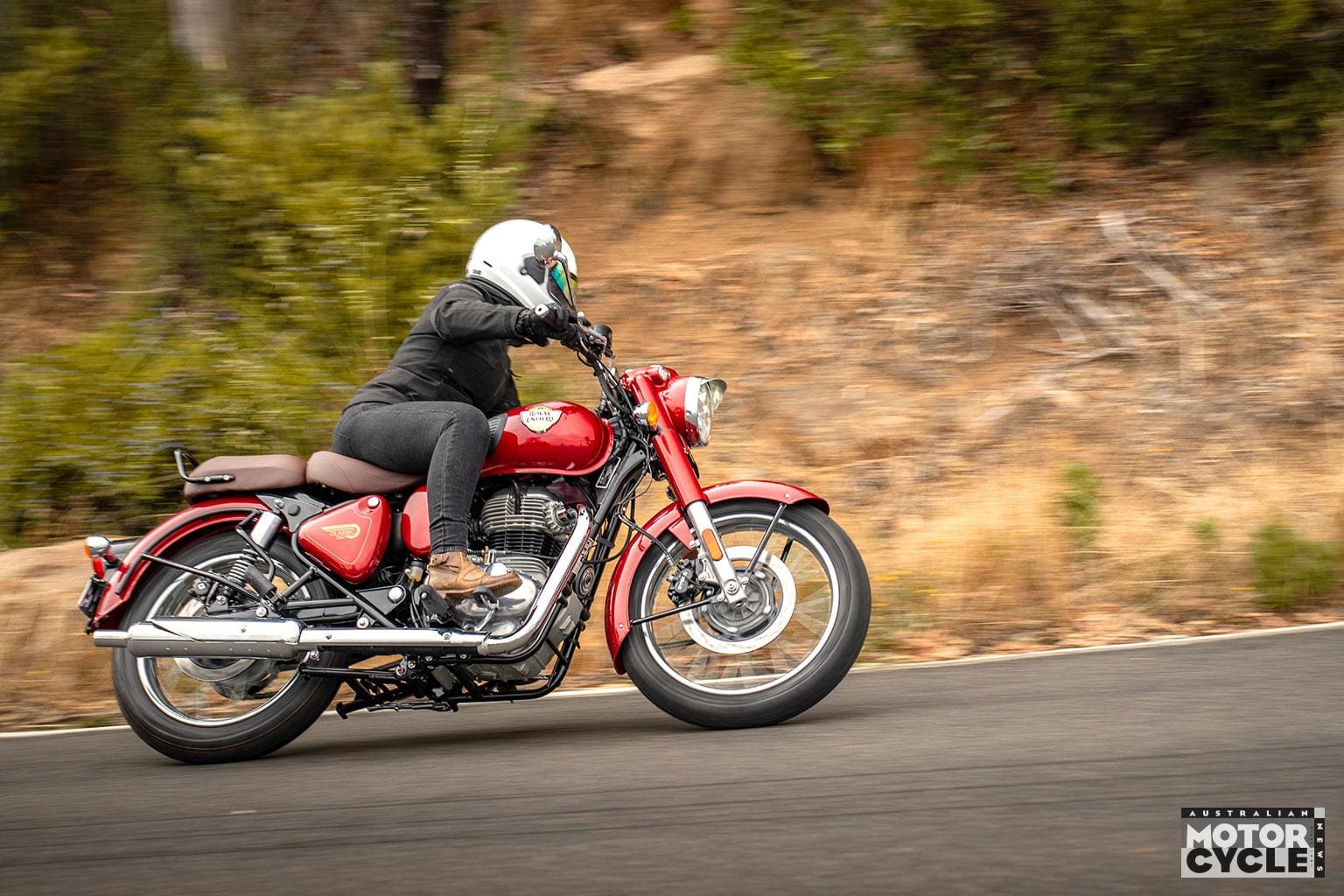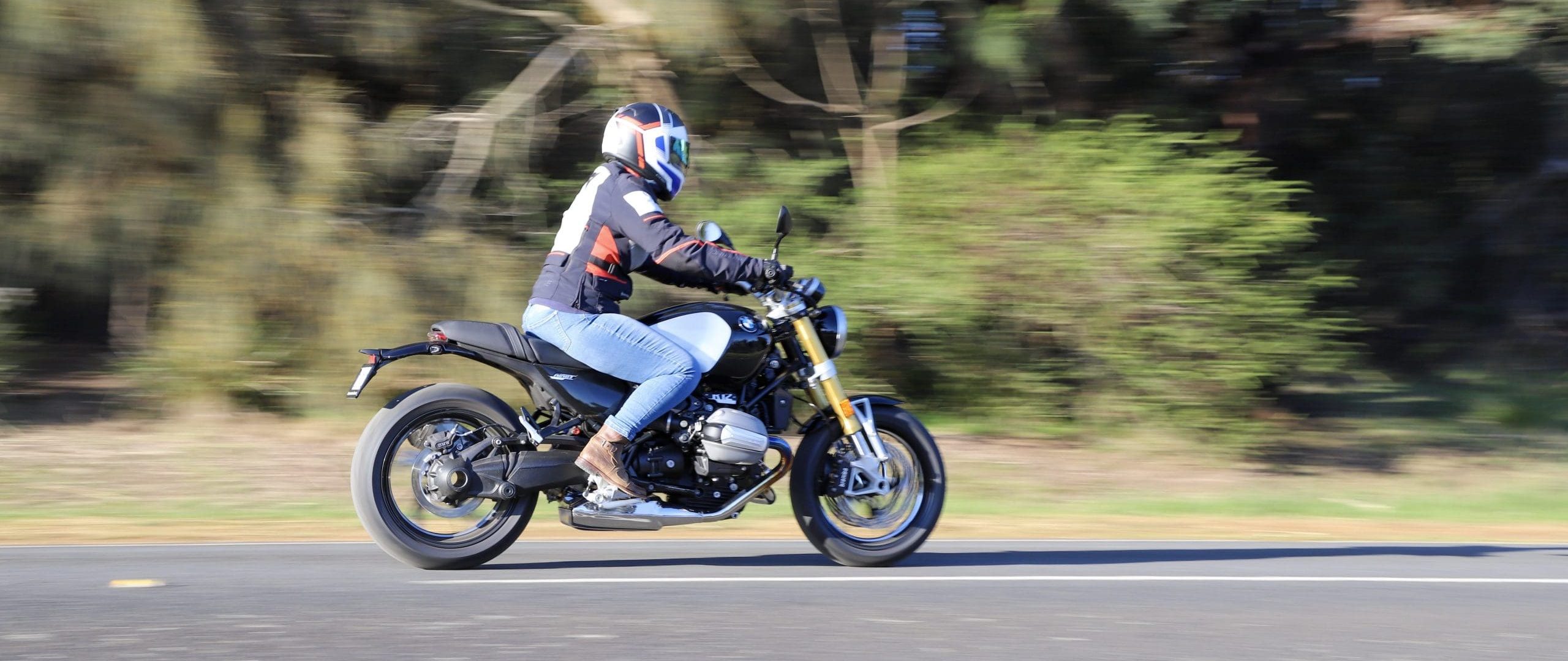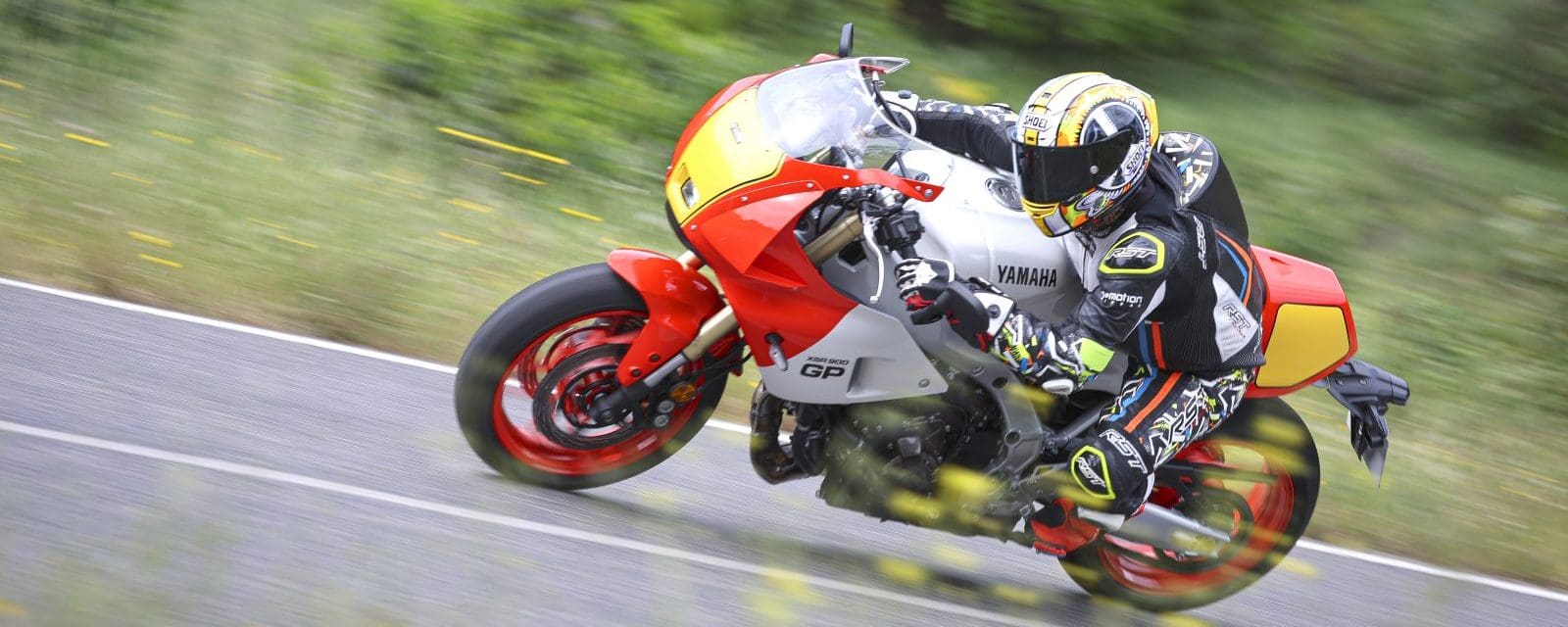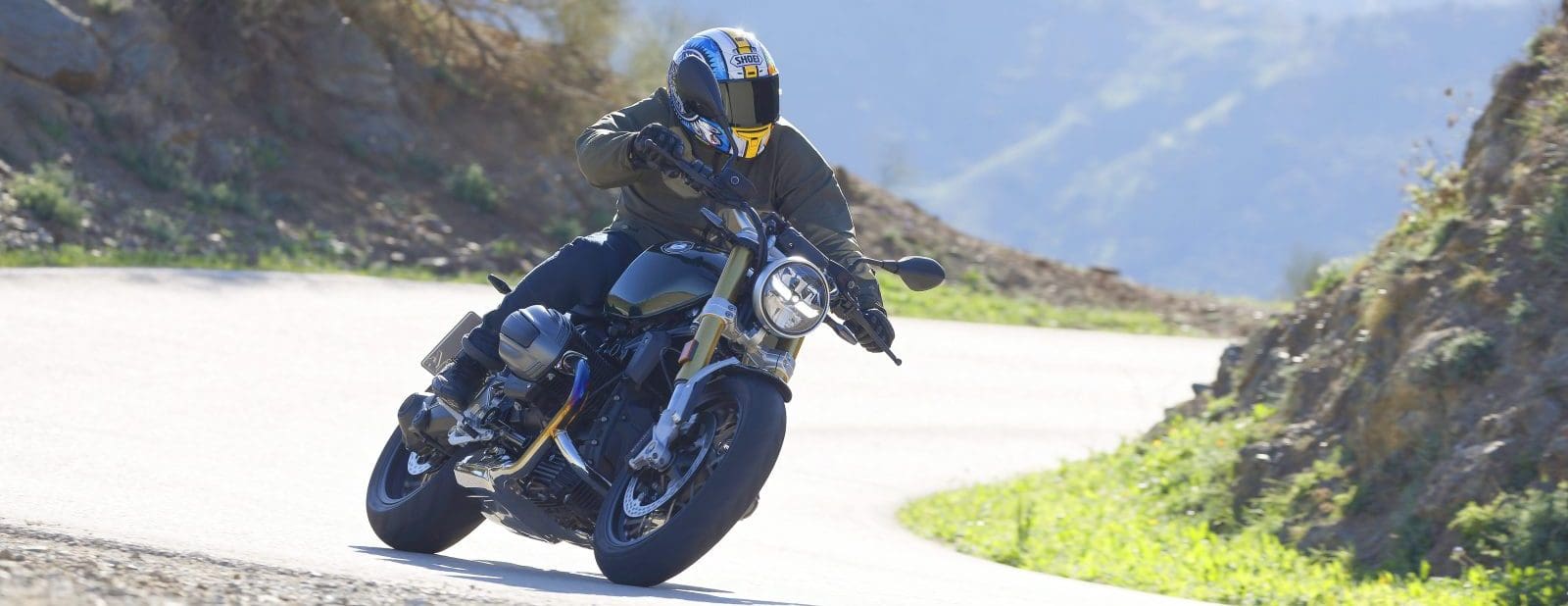There are (at least) two ways to look at the striking new retro Yamaha XSR900 GP. It either ships you back to the 1980s and 1990s when Yamaha’s Marlboro-liveried YZR500 V4 won world titles in the last great two-stroke era of grand prix racing, or it doesn’t. I suppose it depends on your age…
For those who lived and breathed sportsbikes through the 1980s, when mullets were fashionable the first time around, it’s impossible to separate the emotively styled machine we see before us from the deeds of Eddie Lawson and Wayne Rainey who, on their fiery red-and-white factory YZRs, delivered multiple world championships.
For those of slightly more tender years, any stirring of the soul is likely to be less pronounced, but still strong. For me, aged 48, the XSR generates memories of a misspent teenage youth – of a succession of Yamaha FZs and FZRs and TZRs, all those fast and fine handling Yamahas with the same signature flat-top petrol tank and YZR500-derived styling.
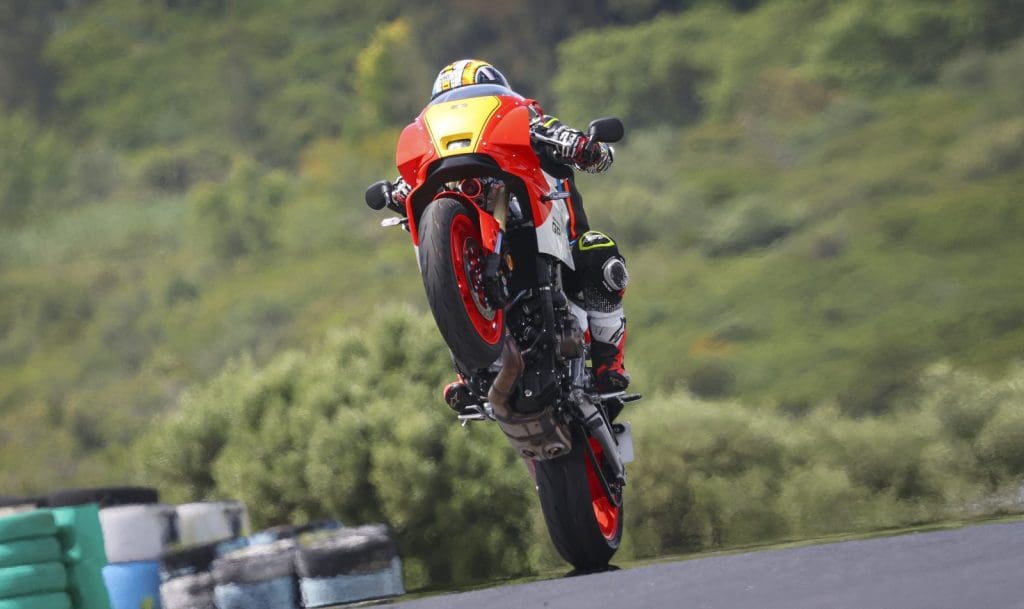
Either way, such is the power and execution of the XSR900 GP’s retro styling, it’s easy to foresee some customers heading, cash-in-hand, to Yamaha showrooms soon – the buying decision made on appearances alone.
We should highlight, however, that this bike is much more than just a styling exercise to stir the emotions of riders who remember when Kylie Minogue was on Neighbours. Yamaha has taken the excellence of the base XSR900 triple and blended it with some hot tech from the Yamaha MT-09 and MT-09 SP sports nakeds to produce what the Japanese manufacturer hopes will be something unique.
But does it work? Is the XSR a superficial styling exercise or a convincing fusion of the past and present? For the record, my old FZ600 traction control was the right wrist, and having cornering ABS would have blown my mind in the 90s, so you can probably sense my eagerness to find out. We headed to Portugal to try the new XSR900 GP on the road, followed by a spin around Estoril, the famous old GP track on the Iberian west coast.
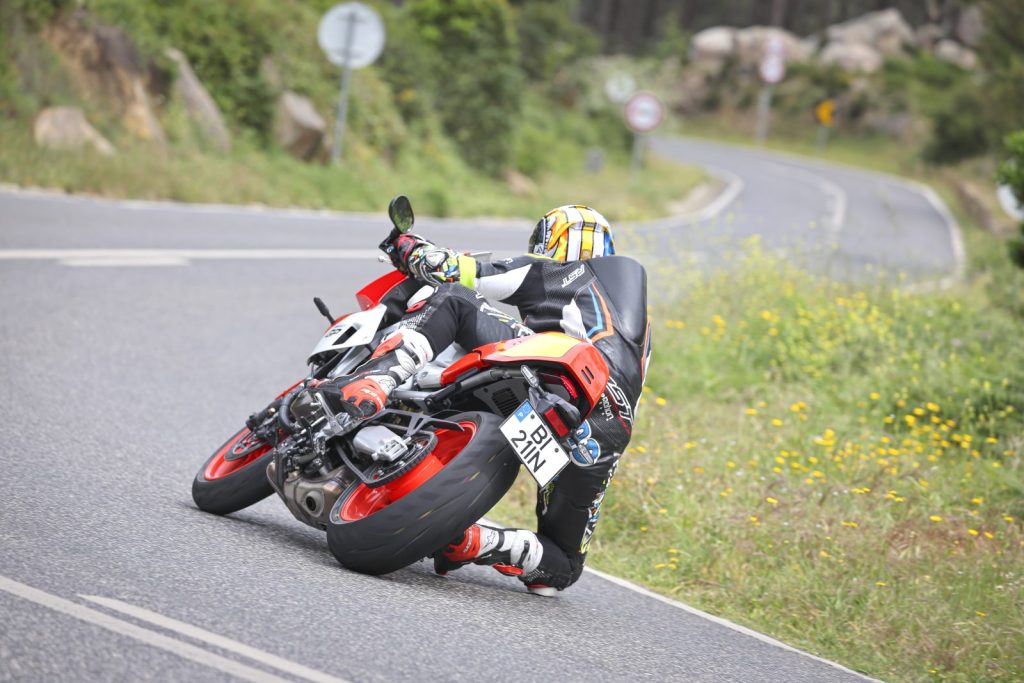
We have to begin with its appearances and nostalgic appeal. Some may debate that it’s just a dressed up XSR900, but Yamaha has added some loving touches to give it a rich retro feel. The top fairing, for example, is secured with good old fairing stays and racy R-clips and wears the distinctive handguards of the legendary YZR too. The digital dash has an analogue theme, drilled fork caps look spot-on for the 80s styling and, from its flat tank, complete with distinctive sculpted knee pockets, to boxy rear single-seat cover, the overall effect is convincingly YZR500, FZR400SP or TRX850 depending on your likes.
The Deltabox-style frame has an authentic period finish, and even the alloy spin-forged wheels come with holes in the hubs just like the ones I had on my Yamaha FZR1000 EXUP. Personally, I would have preferred twin round headlights over the standard single compact light, but others will appreciate the uncluttered yellow nose, which replicates the yellow number boards carried by 500cc grand prix racebikes.
Some might also miss a conventional exhaust and end can (although they are a factory option) but the Marlboro-themed branding is faultlessly on point and, devoid of any actual Marlboro lettering, reminiscent of the very early 1990s when certain countries banned explicit cigarette advertising at their grands prix. In fact, the XSR GP is so retro I felt out of place in full airbag race leathers and wished instead that I’d dragged out my old jacket, jeans, Dr. Martins and 1992 Iron Maiden T-shirt for the ride ahead.

It’s a little strange when you throw a leg over the GP for the first time. You feel a wave of nostalgia, memories of Rainey, Lawson or Niall Mackenzie (who rode with us on the launch) come flooding back, but then you’re greeted by a thoroughly modern five-inch dash and switchgear, including cruise control as standard. This equipment isn’t lifted from the base XSR: it’s all new for the GP. There’s even a neat five-way joystick and unusual ‘see-saw’ indicator switch.
There are now three riding modes – Sport, Street and Rain – plus two custom maps. Within those modes, the XSR GP has four power modes, three levels of traction control, three-level slide control, wheelie control and cornering ABS which can be turned off, adjustable two-way quickshifter and the new brake slip regulator which is always on. These are all linked to a six-axis IMU.
All this might look complicated but isn’t. I opted for either Sport or Street mode with the wheelie control removed because I wanted to pull near-vertical 90s-GP-style wheelies.
Quite unusually, when you remove the wheelie control it’s switched off in all riding modes, including Rain, and remains off when you turn the bike off and on again.

It was immediately apparent the GP is more radical than the standard XSR as your bodyweight is positioned much farther forward. The stance is certainly sportier than the base XSR but well-balanced and still mindful of day-to-day riding. Yamaha says the ’bars, which are mounted above the yokes, are higher and less radical than the R7’s and nothing like as racy as an R6 or FZR400RR SP. However, as a short rider, I did notice the taller seat compared to the standard bike. For reference, the standard adjustable footpegs were set in the high position.
For those initial miles ridden at low and legal speeds, I preferred the softer and smoother throttle response of Street mode over the more aggressive Sport mode. Yamaha has a habit of making its Sport throttle response a little too harsh. Later, on the racetrack, I used Street.
As we made our way to Estoril, there was the odd occasion where we could let the triple sing. The third generation quickshifter is effortless and as crisply set up as any racebike’s, which allows you to quickly throw gears at the triple as it accelerates hard. The Euro 5+ compliant, 890cc CP3 inline triple makes a quoted 93Nm at 7000rpm and 87.5kW (117hp) at 10,000rpm, which feels like the perfect balance on the road for this type of bike.
Ride its torque curve through the midrange and the GP retro delivers instantaneous response and drive. It is urgent, strong and quick.
Alternatively, tuck in behind the sporty screen, chin kissing the tank, hold on to each gear as the revs build and the power flows. The exhaust may look odd and sound a little muted but a lovely induction noise from the airbox adds vital bark and character.
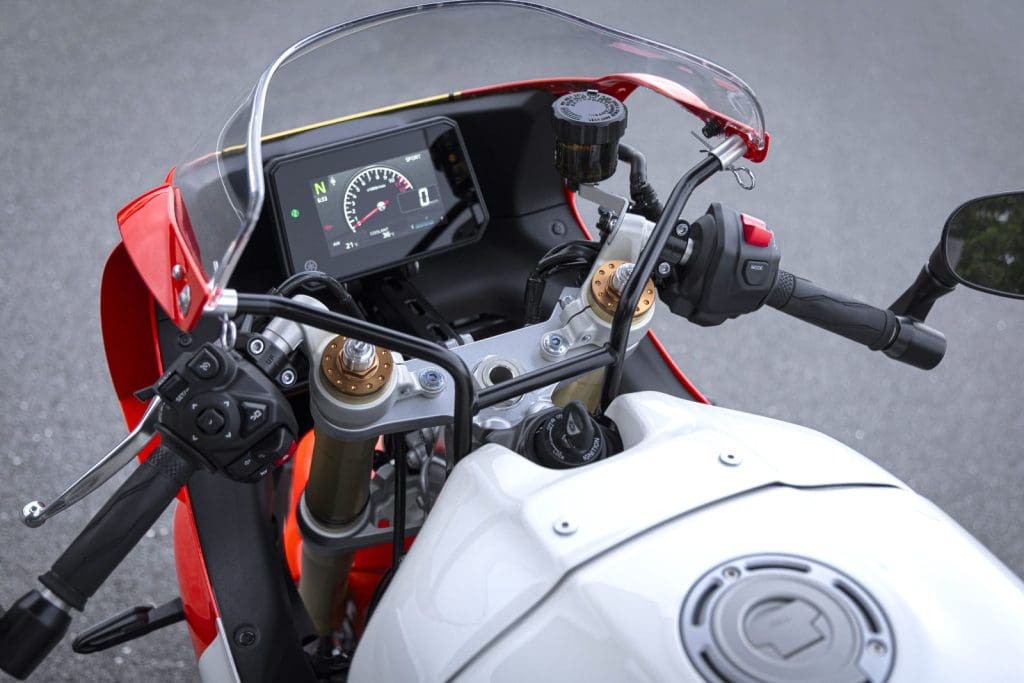
Yamaha’s CP3 engine is highly praised for its combination of power, torque, sound and character – it’s a sweetly blended engine that works well in every road scenario imaginable. Never too much but always full of energy, it can hold its own on the racetrack, too.
Like many I find it impossible not to have fun when the throttle I’m holding is working this particular triple. That said, while the CP3-powered MT-09 and XSR900 are both fantastic wheelie bikes, the GP is less lively in this department, mainly due to having more weight over the front and a longer wheelbase.
Yamaha is claiming that the GP isn’t a sportsbike but has nonetheless given it higher-spec KYB suspension than its base XSR stablemate. Now both ends are fully adjustable, with both high- and low-speed compression damping. Due to that new weight distribution, the front end is a little stiffer and the rear softer, while the latest Bridgestone S23 rubber, a single-compound version of the sports tyre developed in partnership with Yamaha, hugs lightweight aluminium spin-forged wheels.
It feels up for fun – poised but easy going – while the racy imagery of the GP encourages you to attack corners, knee slider hunting for apexes. Initially, I thought the suspension set-up was a little firm as the fork wasn’t as plush as it is on the base XSR, but on a closed stretch of road that allowed us to push the chassis harder, the KYB units worked with effortless control and gave great feedback. We had perfect conditions but even so the Bridgestone S23 rubber warmed up quickly and gave confidence inspiring edge grip and feel.
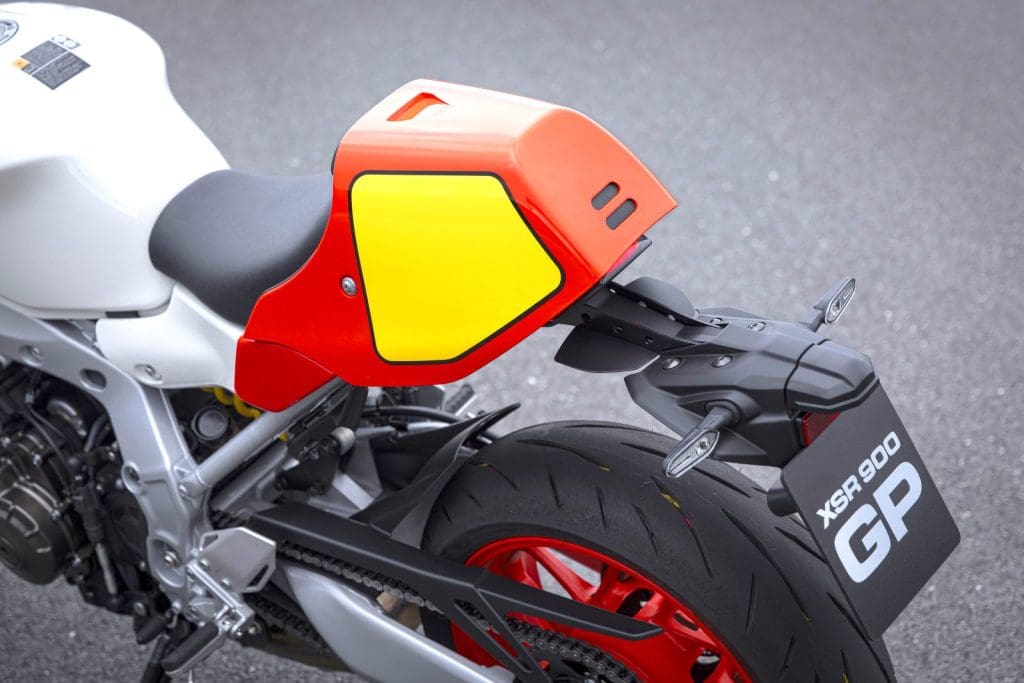
The 900 GP isn’t razor sharp like, say, the R6; instead it’s much more planted, stable and easier to ride. Yamaha quotes its wet weight at 200kg, 7kg more than the naked XSR, but it’s weight carried well. Despite the headstock position being 5mm higher and trail being increased from 107mm to 110mm, the steering feels very similar as the
fun-as XSR. Certainly, you’d have to ride the two bikes back-to-back to notice any difference.
We didn’t get full laps of Estoril, but we did get the opportunity play on track in safety for pictures. This meant taking its long, final, fourth-gear corner high in the revs, ’pegs almost touching the historic racetrack. Even when you start pushing the limits of both the GP’s chassis and the grip of the Bridgestones, it’s apparent there is more to come.
This retro racer will excel on twisty circuits, carrying swathes of natural corner speed and using its spread of torque, supported by its full complement of lean-sensitive rider aids, to harass peakier 600 supersports.
Fit some trackday race rubber, tweak the fully adjustable suspension to save the ’pegs and away you go.
Yamaha hasn’t overhauled the brakes massively. There’s a new 16mm Brembo radial master cylinder, but the 298mm front discs and four-piston calipers remain. Their performance is hard to fault on the road and perfectly matches the easy but sporty attitude of the GP. Several times on track I jumped on the stoppers from high speed to zero, just to give the unobtrusive ABS a workout. You can’t turn off the ABS but you can remove its lean-sensitive functionality, although I’m unsure why you would ever want to.
The new Brake Slip Regulator stops the rear from locking under braking but we would have needed some fast laps of Estoril to test it in a meaningful way. It is worth noting, though, that the GP is incredibly stable on the brakes, which is also probably due to its relatively long wheelbase.
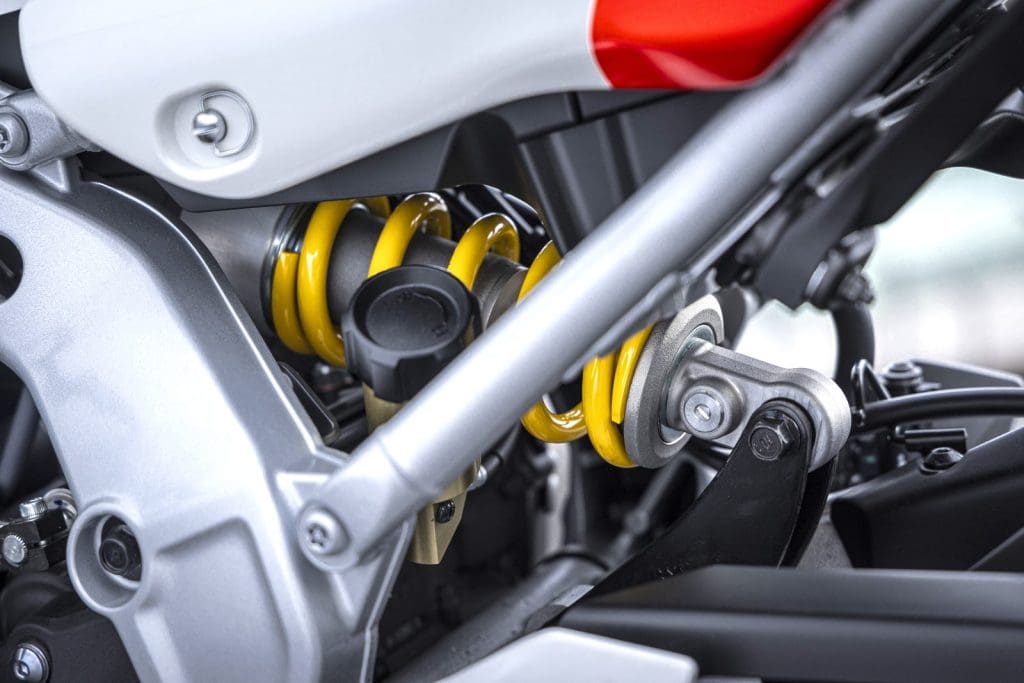
Leaving the track on melted rubber and heading on to the freeway highlighted the versatility of the new GP. With the standard-equipment cruise control activated it was a case of relaxing and churning out some kays.
Yamaha chucked a phone under the seat for the test to allow full map navigation via the Bluetooth connectivity. Meanwhile the new switchgear made it easy to flick between the standard display and the full navigation.
Taller riders on test started to complain about the weight on their wrists after a long day in the saddle but I was comfortable throughout – and don’t forget the ’pegs are adjustable.
If I was to own a GP – and I must admit it would look great in my garage – I’d probably soften the fork a little, just to give it a plusher feel at normal road speeds.
I’d also probably blow the family’s holiday fund on the optional Akrapovic exhaust and tank protection, which looks neat, while giving the optional lower fairing a miss, as I prefer the raw, half-faired look.
You don’t have to be a genius to work out I have fallen for the XSR900 GP and confidently predict that I will be one of many. In Europe dealers were taking orders before prices were released. It ticks all the right nostalgia boxes, blends brilliantly the analogue past with the digital present and fuels the common desire for a sporty and versatile roadbike that can excel everywhere.
I might be a tad biased as I have such fond Yamaha-based memories from the 1990s. Certainly, some of my Suzuki-loving mates who had GSX-Rs and RGVs won’t give the Yamaha a second look, and some younger riders may not get the nostalgia. But even if the retro styling does nothing for you, the GP is still an excellent roadbike.
It combines the excellent qualities and rider aids of the MT-09 SP with the fun of the XSR900 in a retro style. Yamaha couldn’t go wrong. Okay, it’s not a FZ750 or TZR250, but for a 2024 production bike it oozes history and character as well as performance – and I want one.
PROS: It brilliantly blends the analogue past with the digital present, ticking all the right nostalgia boxes.
CONS: Honestly, there’s not a lot to complain about except the Sport throttle response is a little too harsh.
WORDS: ADAM CHILD PHOTOGRAPHY: ANT PRODUCTIONS
SPORTY HERITAGE
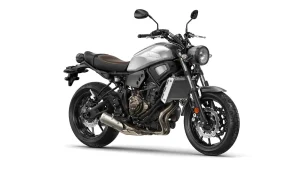
YOU COULD argue that Yamaha’s Sport Heritage line-up started back in 2015, with the retro XJR1300 and SR400, but it wasn’t until 2016, for me anyway, that the company came up with truly convincing heritage offerings in the XSR700 and XSR900, both with obvious design features of the past.
In 2019, Yamaha launched the XTributes which I really liked, the XSR125 – which didn’t come to Oz – followed in 2021, before the updated XSR900 in 2022, which we rode on the world launch in Italy. Two years on we have the XSR900 GP, but I don’t think it will end there and I can’t wait to see where Yamaha goes with this. Can we have a TZR125 replica based on the XSR125 next? That, too, would look great in my garage…
THE COMPETITION
KAWASAKI Z900RS
$16,909 (plus on-road costs)

DUCATI SCRAMBLER NIGHTSHIFT
$20,100 (ride away)
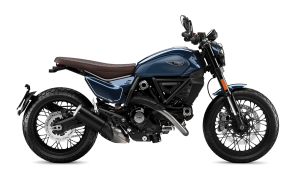
TRIUMPH THRUXTON RS
$26,690 (ride away)

SPECIFICATIONS | YAMAHA XSR900 GP
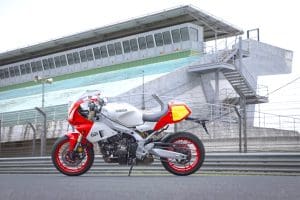
ENGINE
Capacity 890cc
Type Inline three-cylinder, DOHC, four-valves per cylinder
Bore & stroke 78.0 x 62.1
Compression ratio 11.5:1
Cooling Liquid
Fueling EFI, Mikuni throttle bodies
Transmission Six-speed
Clutch Wet, multi-plate, slipper-type
Final drive chain
PERFORMANCE
Power 87.5kW (117hp) @ 10,000 rpm (claimed)
Torque 93Nm @ 7000 rpm (claimed)
Top speed 250km/h (est)
Fuel consumption 5.0L/100km (claimed)
ELECTRONICS
Type Yamaha
Rider aids Power modes, TC, slide control, lift control, cornering ABS, back slip regulator, quickshifter
Modes Sport, Street and Rain, plus two User modes
CHASSIS
Frame material Aluminium
Frame type Diamond
Rake 25º
Trail 110mm
Wheelbase 1500mm
SUSPENSION
Type KYB
Front: 41mm USD fork, fully adjustable, 130mm travel
Rear: Monoshock fully adjustable, 131mm travel
WHEELS & BRAKES
Wheels Aluminium spin-forged
Front: 3.5 x 17 Rear: 5.5 x 17
Tyres Bridgestone S23
Front: 120/70ZR17 (58W)
Rear: 180/55ZR17(73W)
Brakes ADVICS/Brembo
Front: Twin 298mm discs,
four-piston calipers Rear: Single 245mm disc, single-piston caliper
DIMENSIONS
Weight 200kg (wet, claimed)
Seat height 835mm
Width 810mm
Height 1180mm
Length 2160mm
Ground clearance 145mm
Fuel capacity 14L
SERVICING & WARRANTY
Servicing First: 1000km
Minor: 10,000km
Major: 20,000km
Warranty: Two years, unlimited km
BUSINESS END
Price $21,499 (ride away)
Colour options Legends Red or Power Grey
Contact yamaha-motor.com.au





